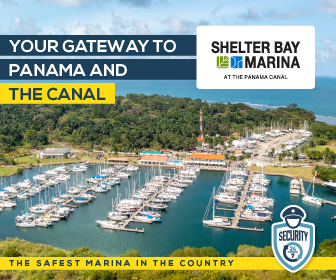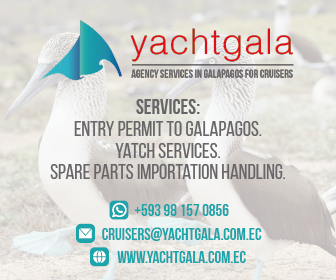Clearing in at Bocas del Toro
Published 14 years ago, updated 6 years ago
(When clearing in at Bocas del Toro) The $193 cruising permit is now valid for a year from the purchase date, and boats with the old permits that terminated on December 31 of the year of issue can get them extended, without charge, to the anniversary of the issue date.
(Editors Note: The official law in Panama however currently states that cruising permits should be granted per the calendar year.)
Fees for entering at Bocas del Toro are, in our opinion, exorbitant:
$60 for the port captain, customs, immigration, and health officials to come to the boat to “inspect” it;
$193 for the year-long cruising permit (which the port captain does not issue during his visit — you have to go to his office to get it);
$15 per person of official stamps for the passports (which you must go to a bank to purchase);
and $100 of miscellaneous fees for visas (which are also not given out during the boat visit). The $100 immigration fee was for two people: $50 apiece. We received a total of 4 receipts for that money, two persons. I’m pretty sure that part of it was a calculation of $5 per month for 6 months; that would come to $30, and I have no idea what the rest of it was for. Of course, that was in addition to the $15 apiece we paid for stamps to be put in our passports.
For the two of us, this came to almost $400, more than double the cost of visiting any country we’ve been to in the Europe and Caribbean, and more than a day’s work, all told. All these documents are void if the person (respectively, boat) leaves the country – so two trips to Panama would cost $800, and so on. I was flying out 5 days after arriving, so my visa cost me almost $20 per day. Ironically, we had come to Panama because airfares from Panama City are so inexpensive.
Completing these clearing in formalities are a big expenditure of time and energy. Checking in requires crews to:
(1) wait for the “inspection”;
(2) go get copies of several documents, including passports and passport photos;
(3) go to the port captain’s office for the cruising permit;
(4) go get copies of the cruising permit;
(5) go to the bank to get passport stamps;
(6) go to the airport to get an entry stamp; and
(7) go to the immigration office in the centre of town to get the maritime visa.
The airport and port captain’s office are a mile or so apart, with the rest of the places somewhere in between. If you know where the dinghy docks are, the total walking can be cut in half by judicious use of the dinghy, or you could take taxis, which are plentiful and not very expensive. Most of the stops require a wait – the immigration office, particularly, almost always has a queue of half an hour to an hour – and people are not always in their offices when they’re supposed to be.
I’d say on a conservative basis that boats should reserve 4 or 5 hours for the full check-in process, and that process could easily extend over two days. And of course, it can’t be completed on weekends or after hours because of the requirement to buy the visa stamps at the bank.
There is a movement for some kind of relief for crews who are staying a short time – perhaps a tourist visa (which is free) for the first 90 days, so the present situation may change. Also, it is said that at Porvenir, San Blas Islands, one can obtain a tourist visa for 6 months, for free. It is not clear whether, if you leave from Bocas or Colon, you would have to first buy a maritime visa and pay the attendant fees.
It turns out the changing rules are a source of frustration to the officials as well. The woman in charge of immigration told me she calls Panama City daily, and one question she asks every day is whether the rules have changed.
Rob Overton
(Editors Note: The Maritime Visa only applies to professional seamen who arrive in Panama to join a commercial vessel and not crew on visiting yachts who are actually tourists.)
Related to following destinations: Bocas del Toro, Caribbean, Panama








